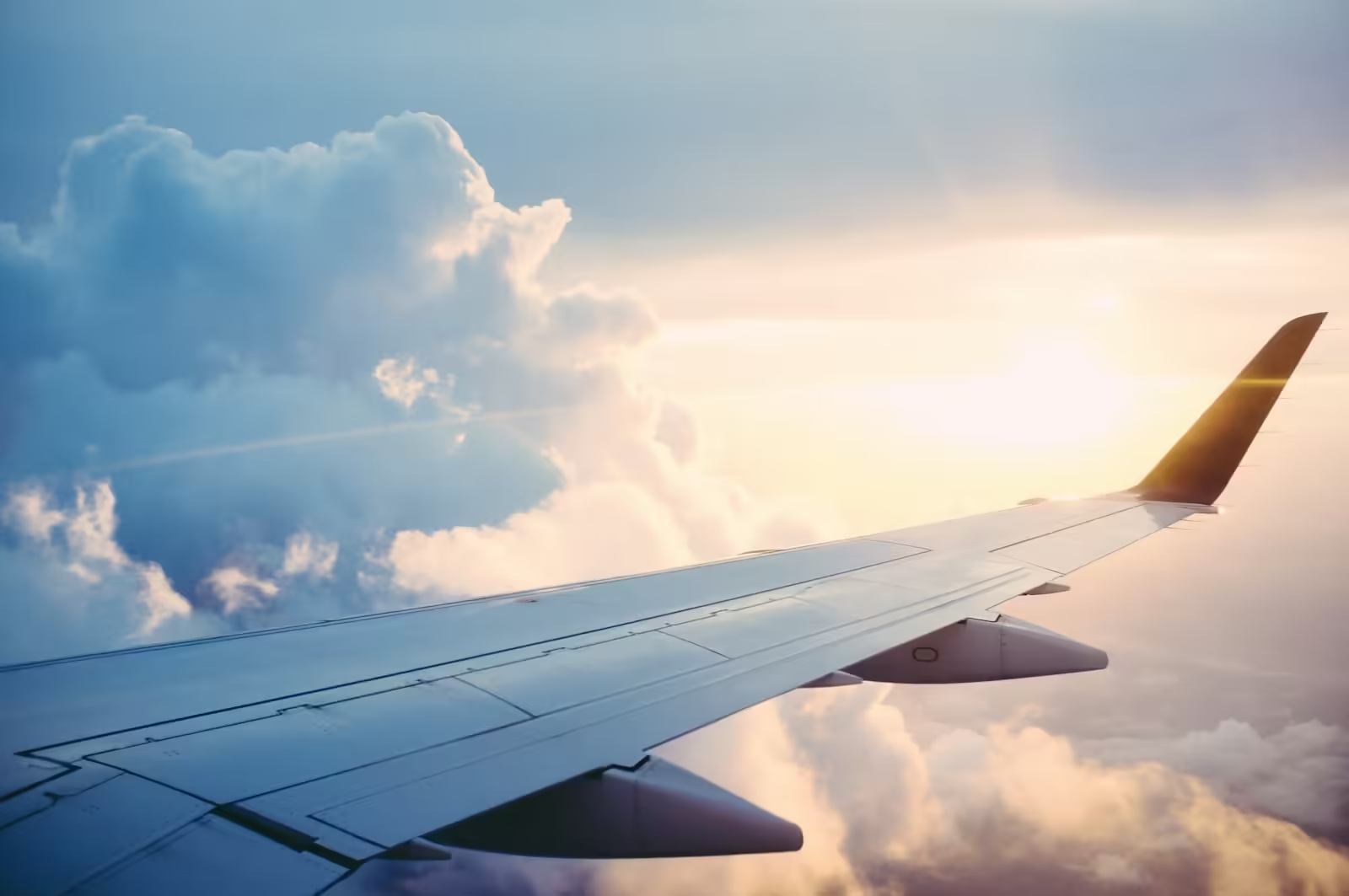
Table of Contents
① Why are Airplane Wingtips Bent Upward?

Have you ever looked closely at the wings of an airplane? When you look out the window while boarding, you can see a small wing-like structure on the tips of the wings; This structure usually has an airline symbol on it. If you look closely, you will see that the tips of the wings are slightly curved upwards.
Although the airline’s branding on wingtips is believed to be for promotional purposes, these wing changes during flight play an important role for the aircraft. Let us explore the causes of wingtip bending upwards in an aircraft.

A “winglet”, often called a “short winglet”, is an upward bend at the tip of an aircraft’s wings. Depending on the manufacturer and type of aircraft, the size and shape of the winglets may vary. These designs are not only aesthetically pleasing, but also significantly reduce the likelihood of vortices forming during flight.
To understand the function of winglets, it is necessary to understand the basics of flying. Aerodynamics, which uses pressure differences between the top and bottom of wings to create lift, allows airplanes—heavy, ten-ton metal structures—to fly.
② The Crucial Role of Winglets

According to this theory, when high-pressure air below an airplane’s wings meets low-pressure air above it, wake turbulence, similar to an airflow vortex, is formed at the tips of an airplane’s wings. When the airflow becomes unstable, this vortex forms near the edge of the wing, causing drag and obstruction to the forward motion of the aircraft.
So the winglet is designed to reduce wake turbulence. By adding a winglet, the airflow traveling from the bottom of the wing to the top is easily diverted, reducing the chance of vortices forming and facilitating effective spreading.
Because of this, winglets can improve an aircraft’s lift, fuel economy, and longevity by reducing the drag produced at the wingtips.

Installing composite winglets on their Boeing 737-800 aircraft helped Korean Air save about $1.39 million in operational costs in 2011. Depending on the weight of the aircraft, reducing the fuel load also has the benefit of reducing airport landing charges.
A higher climb angle after takeoff is made possible by the winglet, which also increases aerodynamic performance. This allows the aircraft to take off quickly and enter the cruise phase. When was the first winglet installed on an airplane? Winglets were initially conceptualized in 1897.
To manage vortices, UK’s Frederick W. Lanchester devised and patented the idea of installing vertical panels on the wingtips. Winglets were later developed in the 1970s by NASA’s Richard Whitcomb and played a major role in aircraft design. In October 1985, on the Boeing 747-400, a winglet was installed for the first time on an aircraft.
When winglets were added, the aircraft’s speed and range increased by about 3.5%, especially compared to a Boeing 747-300 without winglets. Winglets were used less often on airplanes as their advantages became apparent, but they are now a standard element of most aircraft designs.
③ However, not all airplanes have them

However, the strange thing is that despite all the advantages of winglets, they are only applied to some airplanes. For instance, one of Boeing’s prominent models, the Boeing 777, does not have winglets. Instead, the Boeing 777-200 and 777-300 feature raked wingtips instead of winglets.
This is due to the length of the wings. Installing winglets on long-wing aircraft such as the Boeing 777 can cause severe vibration and increase the overall wing, which can restrict airport use. Thus, increasing the wingspan for the Boeing 777 was the safest option. Each aircraft wing has specific properties.
From the past to the present, aircraft manufacturers have been engaged in a never-ending race to maintain even the slightest competitive edge. It is clear that winglets are one of the key components used to reduce fuel consumption and aircraft manufacturers do their best to incorporate them.
Thus, we examined the purpose of airplane wings today. This must have piqued the interest of many people fly. I hope this satisfies your curiosity.
READ | YF-118G: A History of Stealth Plane You’ll Never Forget


1 thought on “Airplane wings are bent upwards; why? 3 Reason of That.”